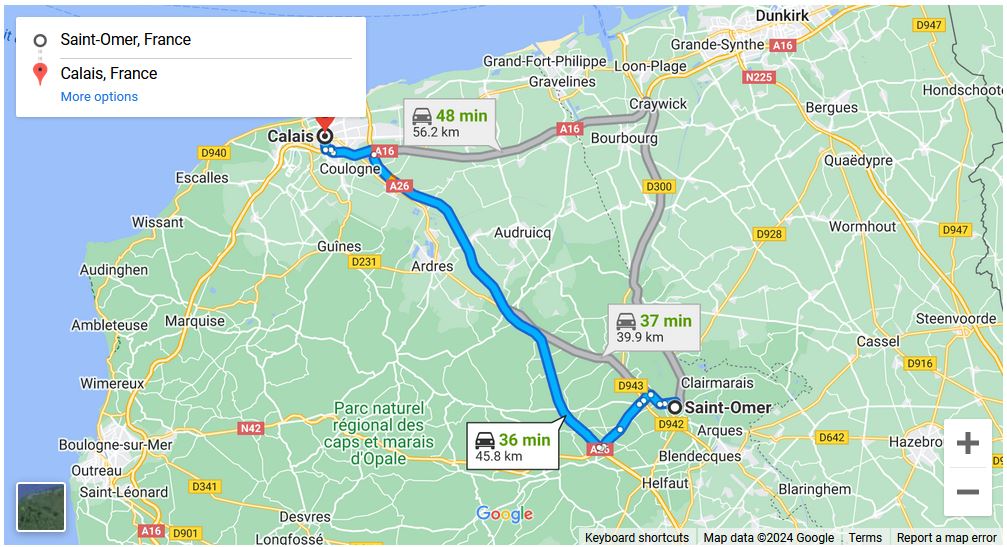The journey from Saint-Omer to Calais, spanning approximately 50 kilometers, takes travelers through the picturesque landscapes of northern France, unveiling the cultural heritage, historical sites, and coastal beauty of the region. Departing from the quaint town of Saint-Omer, nestled along the Aa River, the route meanders through charming villages and eventually reaches the iconic port city of Calais on the English Channel.
Saint-Omer, with its Notre-Dame Cathedral, cobbled streets, and serene waterways, serves as the starting point for this short but delightful journey. Leaving the town, travelers often encounter the rolling fields and meadows that characterize the landscape of the French countryside. The road winds through peaceful hamlets, offering glimpses of traditional French architecture and the pastoral charm of the region.
En route to Calais, travelers may come across the remnants of historical sites that punctuate the landscape. The countryside surrounding Saint-Omer is dotted with reminders of World War II, including bunkers and memorials that speak to the region’s wartime history. These sites provide a poignant reminder of the impact of conflict on this tranquil landscape.
Continuing the journey, the route approaches the city of Dunkirk, known for its historical significance during World War II. The Dunkirk evacuation, where Allied forces were evacuated from the beaches in 1940, is commemorated by monuments and memorials along the coast. Travelers passing through Dunkirk may choose to explore these sites and pay homage to the bravery of those who participated in the evacuation.
As the journey progresses westward, the landscape begins to transform, and the unmistakable scent of the sea fills the air. The coastal town of Calais emerges on the horizon, inviting travelers to explore its maritime history and iconic landmarks.
Calais, situated at the narrowest point of the English Channel, has long been a strategic crossroads and a gateway between France and England. The city’s history is intertwined with tales of trade, conflict, and cultural exchange. One of the most iconic landmarks in Calais is the imposing Calais Lighthouse, which stands as a sentinel overlooking the harbor and channel.
The heart of Calais is its historic Old Town, where cobblestone streets wind their way through charming squares and centuries-old buildings. The Town Hall, a splendid example of Flemish Renaissance architecture, and the Rodin sculpture “The Burghers of Calais” are among the notable attractions in this area.
Calais is also renowned for its international port, a hub of maritime activity that connects France to the United Kingdom. The bustling port area reflects the city’s role as a cross-channel gateway, with ferries shuttling passengers and goods across the English Channel.
Travelers can take in panoramic views of the coast and the channel from Calais’ sandy beaches, providing a serene backdrop for a leisurely stroll. The expansive Parc Saint-Pierre, a verdant oasis in the heart of the city, offers a peaceful retreat for those looking to unwind amid nature.
In conclusion, the journey from Saint-Omer to Calais is a short yet captivating exploration of northern France’s diverse landscapes and historical tapestry. From the tranquil countryside surrounding Saint-Omer to the coastal allure and maritime history of Calais, each segment of the route contributes to a journey that spans time, culture, and the natural beauty of this fascinating region. Whether fascinated by wartime history, charmed by quaint villages, or captivated by coastal vistas, travelers on this route experience the essence of northern France.



